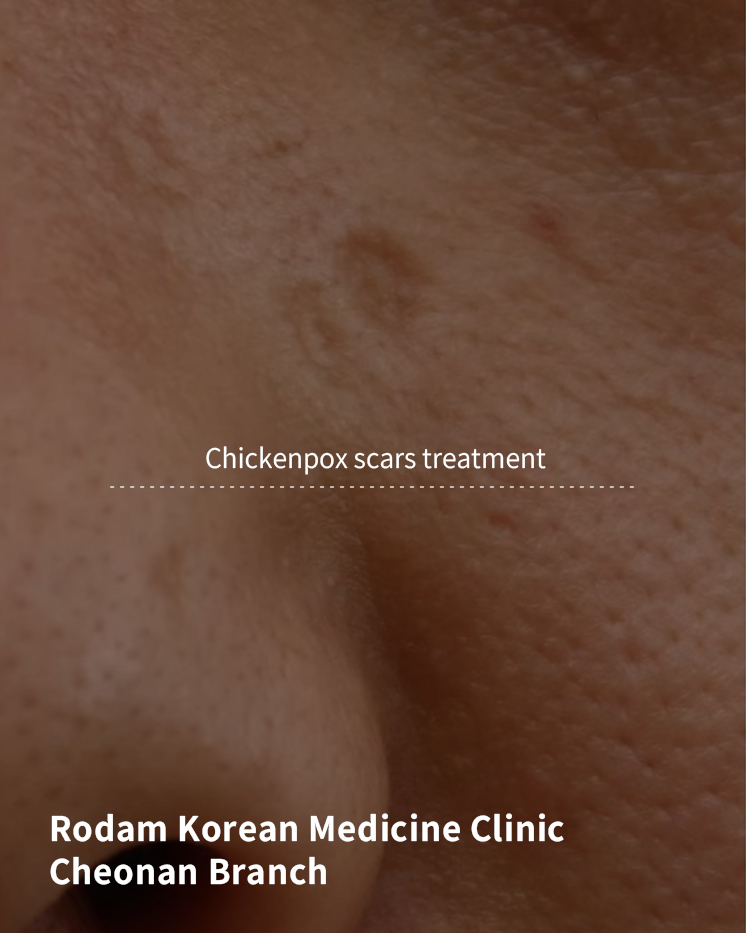
Treatment Review for Chickenpox Scars at Rodam Korean Medicine Clinic in Cheonan with Coratherapy
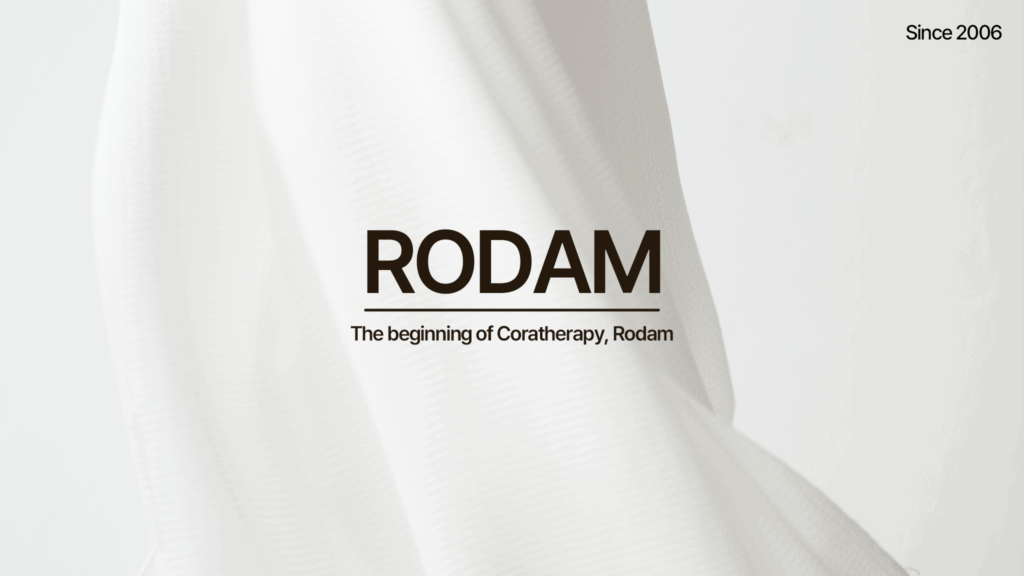
Hello, this is Doctor Kwangil Paeng from Rodam Korean Medicine Clinic Cheonan branch.
Today, I would like to introduce a treatment case for chickenpox scars.
The patient is a man in his 30s who visited us to treat six indented scars
on the side of his nose and the front of his cheeks caused by chickenpox
he had during childhood.
Case :: Chickenpox scars on the side of the nose and cheeks
History :: Male in his 30s
Visited due to six indented scars on the side of the nose and the front of the cheeks
caused by chickenpox during childhood
Report :: Six sessions of Coratherapy performed
This treatment was conducted approximately every 2 to 3 weeks,
and a total of six sessions were completed.

The scars, both large and small, were located on both sides under the eyes,
with three scars on the right and three on the left, totaling six scars.
Among them, the large scar right next to the right side
was larger and more irregularly shaped compared to typical scars.
The scarred areas appeared slightly brownish due to pigmentation.
Although Coratherapy cannot completely remove pigmentation,
the stimulated areas regenerate, causing the pigmented parts to lighten slightly.
Additionally, the depth differences in the indented scars, which created shadows
and made the areas appear darker, improved, making the scars look brighter
than before.

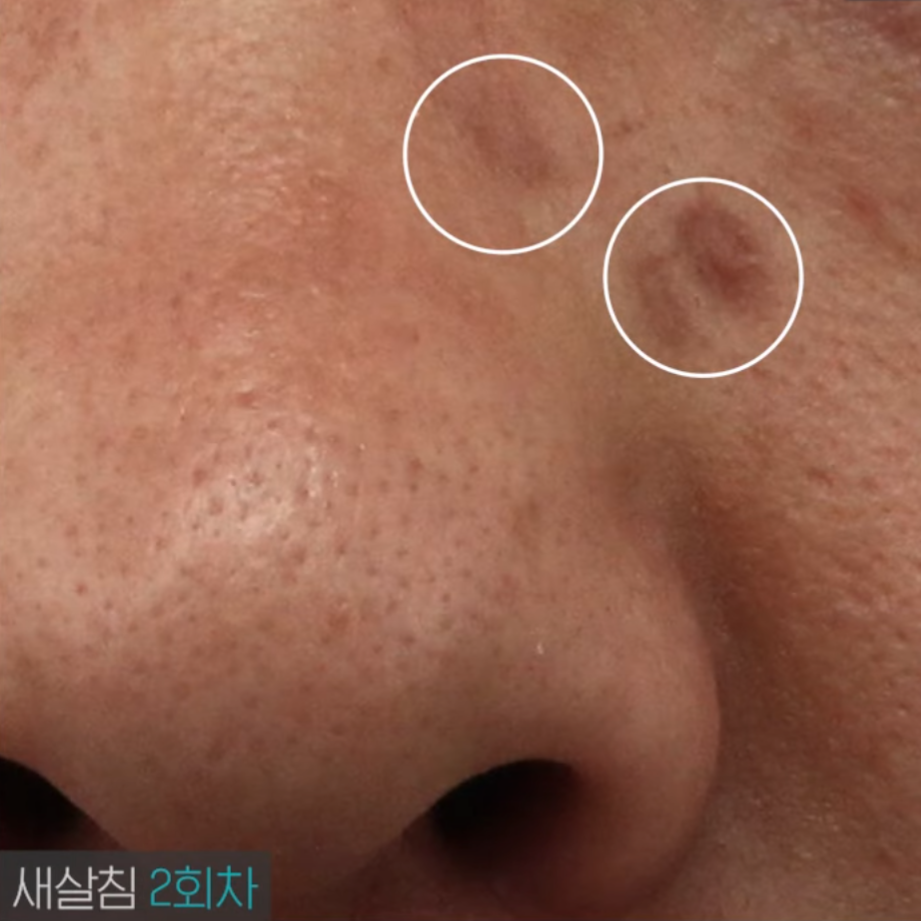
This is the appearance after the second session. Comparing it with the pre-treatment photo,
you can see that the overall depth has slightly improved.
The edges have softened, and the base of the scars has slightly risen.
However, the scars still appear red due to the treatment,
making the scars still visible at this stage.
The smallest scar on the right cheek has significantly improved after just two sessions,
appearing much fainter.
Overall, this patient shows a relatively fast regeneration speed,
but the redness tends to linger longer.
As such, it is important to understand that the speed of regeneration
and the fading of redness can vary depending on the patient’s skin condition
and regenerative ability.

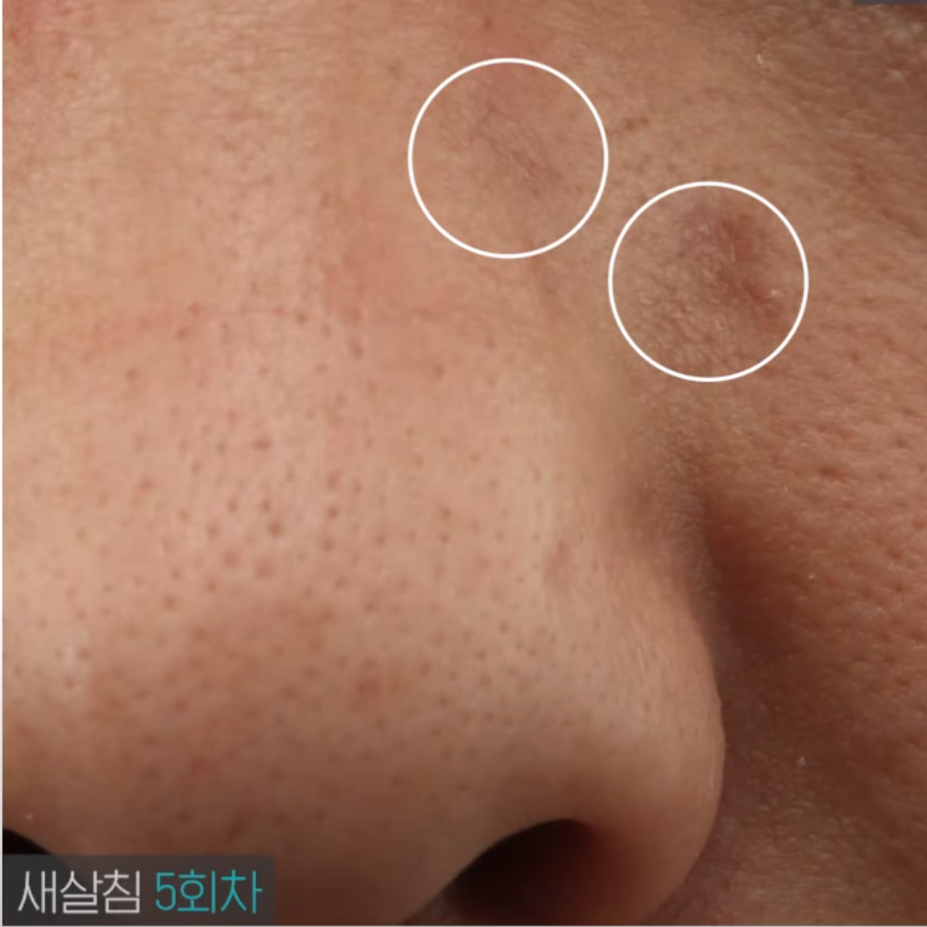
This is the photo after the fifth session.
Only two scars on the right and one on the left are visible,
while the other scars have significantly improved.
The depth has improved, and the scars have faded considerably,
with the redness also reduced compared to the beginning,
making the scars less noticeable.
At this stage, the treatment focused on the remaining depth
and the edges of the scars, tailored to the condition of the scars.

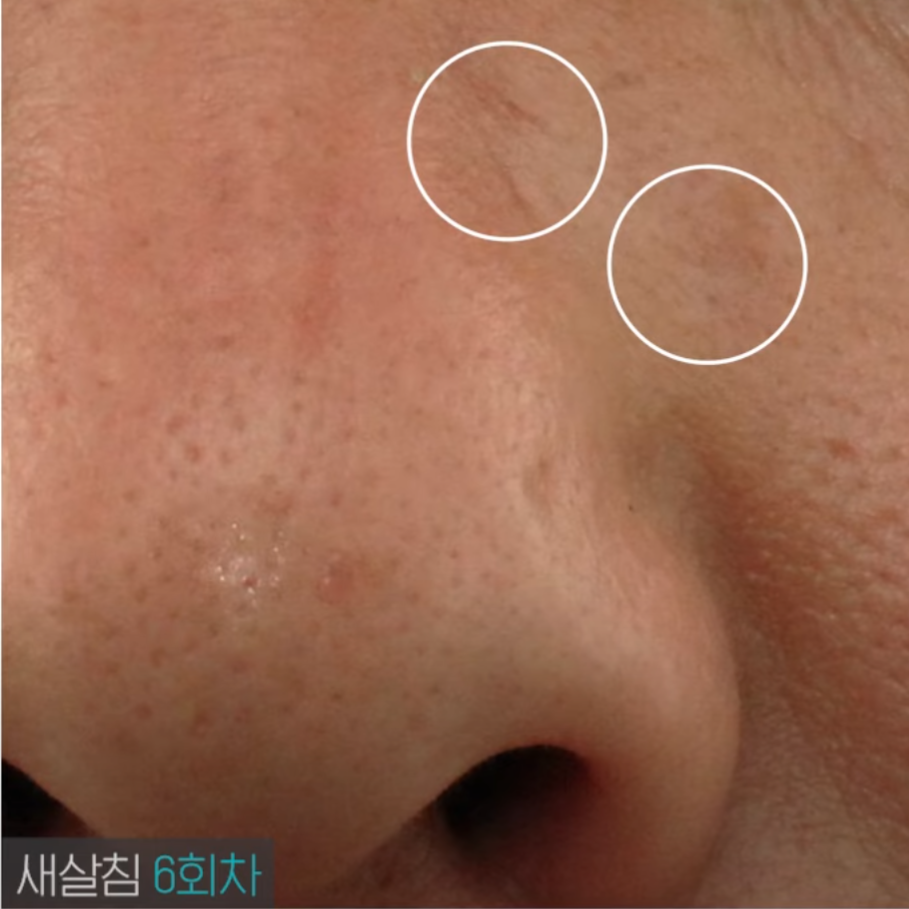
This photo was taken two years after the final session.
The patient visited again for additional treatment
as he was concerned about scars in other areas.
Over time, the redness has completely faded,
and the areas where the skin had filled in have remained well-maintained,
as seen in the photos.
Since Coratherapy involves regenerating your own skin,
once the skin fills in, it does not collapse or disappear,
but remains well-maintained.

Chickenpox scars are often large and deep,
but they respond well to treatment compared to their appearance.
However, many people leave them untreated
because they are unaware of effective treatment methods.
Even large and deep scars can improve significantly,
so if you are concerned about chickenpox scars,
we recommend considering Coratherapy.
We hope today’s post has helped alleviate some concerns about chickenpox scars.
If you would like to see more detailed before-and-after photos,
please visit the ‘Rodam Korean Medicine Clinic’ YouTube channel.


